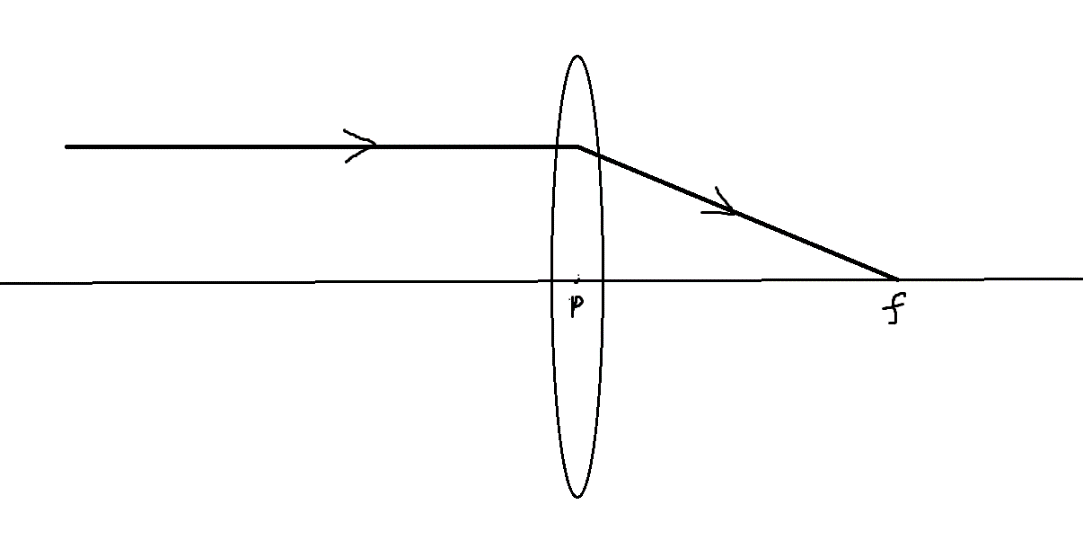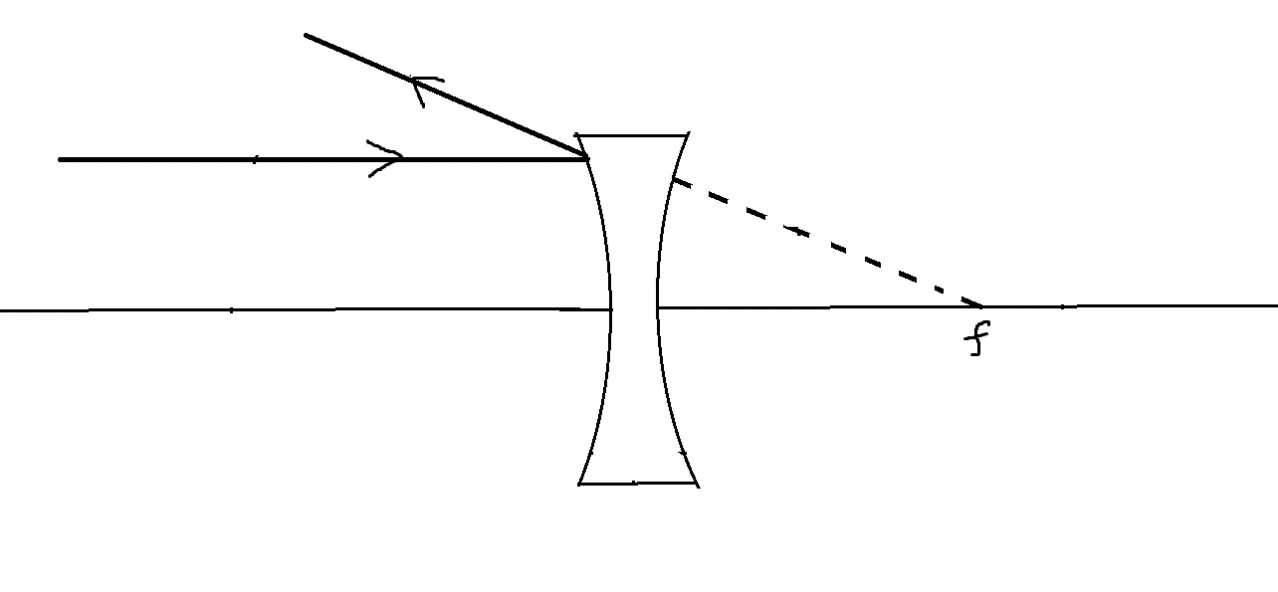
If two lenses of power 3D and -1D are kept in contact, what is the focal length and nature of the combined lens? Note that D implies dioptre.
A. 50 cm, convex
B. 50 cm, concave
C. 200 cm, convex
D. 200 cm, concave
Answer
574.8k+ views
Hint: When two or more lenses are kept in contact with each other, the resultant power of the combined lens is equal to the algebraic sum of the individual powers.
$P = {P_1} + {P_2} + ..$
Formula Used:
$P = \dfrac{1}{f}$
$P = {P_1} + {P_2} + ..$
Complete step by step answer:
When the 2 lenses are kept in contact together, the resultant power,
$P = {P_1} + {P_2}$
Substituting, we get –
$
P = 3D + ( - 1D) \\
P = 3 - 1 = 2D \\
$
Power is defined at the inverse of the focal length, $P = \dfrac{1}{f}$
Hence, the focal length is given by, $f = \dfrac{1}{P}$
Substituting the value of P, we get –
$
f = \dfrac{1}{2} \\
f = 0.5m \\
f = 50cm \\
$
For a convex lens, the focal length is positive and for a concave lens, the focal length is negative. Since, the focal length is +50cm, the combination lens is of convex nature.
Hence, the correct option is Option A.
Note:
Note:
1. The convex lens is called convergent because the ray of light passing parallel to the principal axis of the lens, after passing through the convex lens, converges towards the centre to a point called focal length. Since the focus is along the direction of the incident light, the focal length is positive.

2. The concave lens is called divergent because the ray of light passing parallel to the principal axis of the lens, after passing through the convex lens, diverges away from the lens and it appears to be emerging away from an imaginary point called focus. Since the focus is in the reverse direction of the incident light, the focal length is negative.

$P = {P_1} + {P_2} + ..$
Formula Used:
$P = \dfrac{1}{f}$
$P = {P_1} + {P_2} + ..$
Complete step by step answer:
When the 2 lenses are kept in contact together, the resultant power,
$P = {P_1} + {P_2}$
Substituting, we get –
$
P = 3D + ( - 1D) \\
P = 3 - 1 = 2D \\
$
Power is defined at the inverse of the focal length, $P = \dfrac{1}{f}$
Hence, the focal length is given by, $f = \dfrac{1}{P}$
Substituting the value of P, we get –
$
f = \dfrac{1}{2} \\
f = 0.5m \\
f = 50cm \\
$
For a convex lens, the focal length is positive and for a concave lens, the focal length is negative. Since, the focal length is +50cm, the combination lens is of convex nature.
Hence, the correct option is Option A.
Note:
Note:
1. The convex lens is called convergent because the ray of light passing parallel to the principal axis of the lens, after passing through the convex lens, converges towards the centre to a point called focal length. Since the focus is along the direction of the incident light, the focal length is positive.

2. The concave lens is called divergent because the ray of light passing parallel to the principal axis of the lens, after passing through the convex lens, diverges away from the lens and it appears to be emerging away from an imaginary point called focus. Since the focus is in the reverse direction of the incident light, the focal length is negative.

Recently Updated Pages
A man running at a speed 5 ms is viewed in the side class 12 physics CBSE

The number of solutions in x in 02pi for which sqrt class 12 maths CBSE

State and explain Hardy Weinbergs Principle class 12 biology CBSE

Write any two methods of preparation of phenol Give class 12 chemistry CBSE

Which of the following statements is wrong a Amnion class 12 biology CBSE

Differentiate between action potential and resting class 12 biology CBSE

Trending doubts
What are the major means of transport Explain each class 12 social science CBSE

Which are the Top 10 Largest Countries of the World?

Draw a labelled sketch of the human eye class 12 physics CBSE

How much time does it take to bleed after eating p class 12 biology CBSE

Explain sex determination in humans with line diag class 12 biology CBSE

Explain sex determination in humans with the help of class 12 biology CBSE




